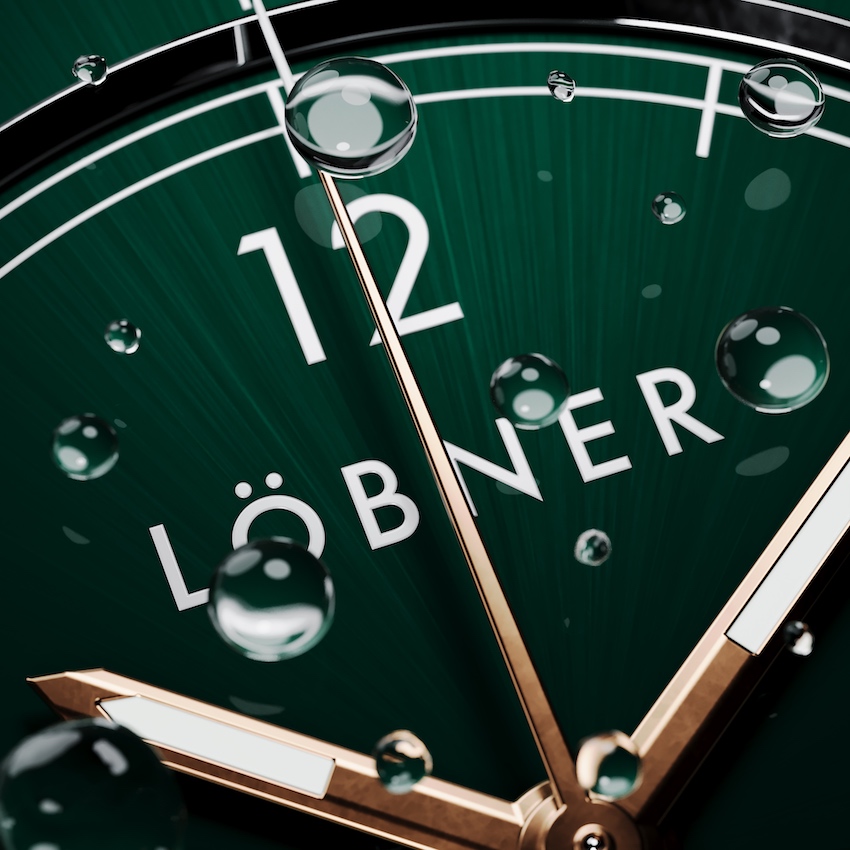With the rebirth of the LÖBNER watch brand, originally founded in 1862, a piece of German industrial history is being made accessible again—not as a museum re-enactment, but as an attempt to formulate a creatively independent, contemporary perspective on the innovative art of watchmaking »made in Germany«.
Founded by Franz Ludwig Löbner in Berlin in the 19th century, LÖBNER was synonymous with precision at the limits of measurement for decades. As one of the pioneers of mobile timekeeping, the company developed mechanical systems for recording hundredths and thousandths of a second as early as the 1880s —, including the so-called Tertienzähler and chronoscopes with corresponding triggering devices.
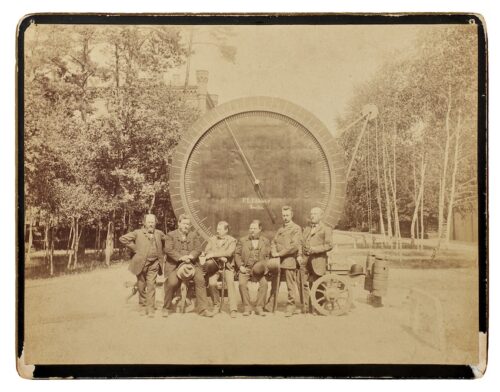
With a diameter of three meters, the 1000th of a second stopwatch from LÖBNER was impressive in several respects.
Innovations that were exported worldwide and used on horse racing tracks, in athletics stadiums and at the Olympic Games. LÖBNER chronometers also documented international competitions and world records in early motor sports. Despite these pioneering achievements, the brand ran into turbulence in the middle of the 20th century and eventually disappeared from the market until 2023, when Munich entrepreneur Matthias Düwel—and several partners—took it on.

The so called Tertienzähler from LÖBNER, a high-precision stopwatch that could measure times to the nearest 100th of a second.
However, today’s LÖBNER expressly does not see itself as a historicizing reissue. Although the design approach is based on the functional characteristics of earlier models—such as the off-centered time display and the emphasis on short-time measurement—it deliberately avoids nostalgic quotations or formal replicas. The design signature of Emmanuel Dietrich is leading the way in this positioning. The renowned product designer, who has previously designed watches for companies such as Hermès and the Swatch Group, as well as launching his own watch brand DIETRICH in 2010, made it clear with the first LÖBNER models presented after the relaunch that, despite the brand’s long history, design independence is his top priority.
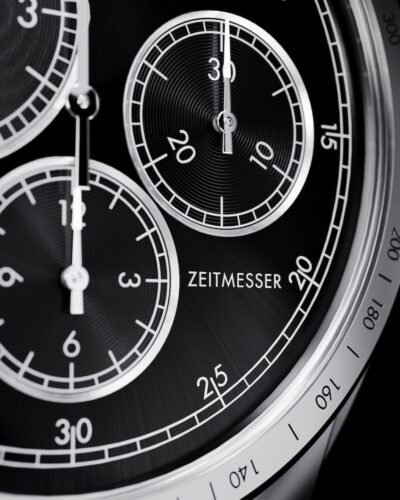
The LÖBNER Steelracer model is a tribute to the technological pioneering spirit of automobile racing in the early 20th century.
The current product family includes the Steelracer chronograph, which is inspired by famous racing cars of the 1920s and 1930s and has an extremely striking aesthetic with an off-center time display, as well as the three-hand Sledge watch with patented crown protection slider as a particular highlight. All models were created with an industrial design concept in mind—because, as Dietrich emphasizes, it is not about a decorative restaging of the brand, but about the continuation of functional principles in a clear, contemporary design language.
In our interview, Emmanuel Dietrich also explains how he translates the historical parameters of the brand into contemporary watch design, why mechanical precision still exerts such a fascination in today’s digital age and which design principles he believes are the foundation for creating timeless design.
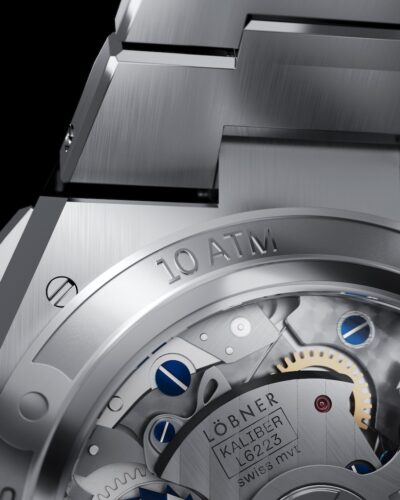
The elaborately finished column-wheel chronograph caliber L6223 of the LÖBNER Steelracer has a 60-hour power reserve.
Chapter What was the decisive impulse to revive an almost forgotten brand like LÖBNER? Was it a strategic investment by the initiator Matthias Düwel or rather a personal fascination for historic brands and/or an enthusiasm for the art of watchmaking?
Emmanuel Dietrich So Matthias Düwel is passionate about the history of German luxury and realized that almost all the brands had disappeared with the Second World War. He then began to research and collect these brands—with the idea of founding a group to revive them. This is how LÖBNER became part of the Jandorf Group and one of the first brands to be revived. Another brand in the group that is very successful is Josephinenhütte. We also have a second watch brand from Glashütte in development, but we are taking our time and planning for the long term.
Chapter The luxury watch industry is a world characterized by tradition, in which brands with centuries of history dominate. How does LÖBNER position itself in this environment—as a tribute to the past or as a modern interpretation of the classic art of watchmaking?
Emmanuel Dietrich We clearly want to reflect the German avant-garde by being the first German watch brand to specialize in steel sports watches. This reflects the modernity of approach that has always driven LÖBNER: Short time measurements, super high-tech solutions of time, a truly fascinating history of German ingenuity and engineering. In doing so, we honor our past, but at the same time we are committed to continuing the innovative spirit of our founders.
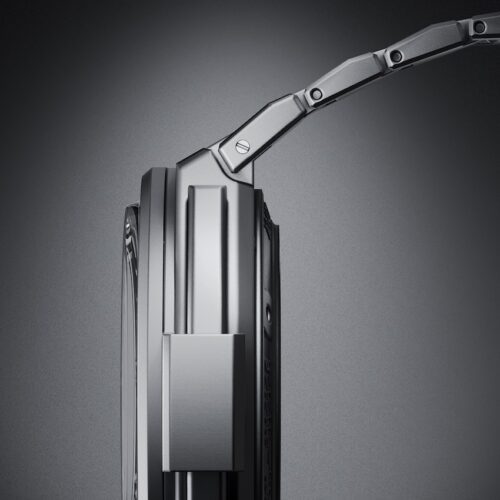
The Speed Arrow Limited Edition is a bead-blasted stainless steel chronograph with a silver arrow gray dial, a tribute to the iconic silver arrows of the 1920s and 30s.
Chapter What design principles did you define for the current LÖBNER collection? For example, were there any historical design details that were essential for you during the relaunch in order to preserve—the historical authenticity of the brand, even if perhaps in a modern interpretation?
Emmanuel Dietrich Yes, the design of the chronograph dial is clearly based on the eccentric distribution of the counters, which was already used in the tertien counter. The tertien counter was the greatest success of the LÖBNER brand, was able to measure hundredths of a second as early as 1881 and was exported all over the world. Another characteristic feature is the crown guard, which—pushed upwards—serves as a key lock for the start-stop function while the watch is being set. This not only protects the crown, but also the movement. This is a patented innovation and testifies to our high standards. With the chronograph, too, the visual priority was clearly placed on short-time measurement by moving the time display at ten o’clock into the background. It is therefore a »chronograph that also displays the time«, and not a »watch that is also a chronograph«. When the central second hand of the chronograph glides across the dial, it stands majestically alone. These are all details that add up to a complete and satisfying experience.
Chapter In many design disciplines, good design is often referred to as »timelessness«—a concept that is also of great importance in haute horlogerie. What does timelessness mean to you in product design and especially in watch design—and how is this principle reflected in the current models from LÖBNER?
Emmanuel Dietrich I believe that timelessness is the reward of time for good design. Only designs that reflect their time and are perfectly consistent will eventually become timeless. So we have tried to be very particular and let time determine whether we are timeless or not. The eternal haute horlogerie briefing »timeless, but modern, innovative, but with classic features« is a self-deception for me. What is important first and foremost is coherence. All details, the entire design language of an object should serve the same purpose. Then a design is created that is independent and therefore has the chance to become timeless at some point.
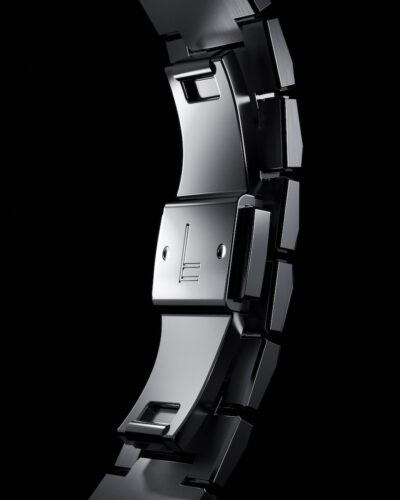
Close-up of the armband of the LÖBNER Steelracer Black
Chapter You relaunched LÖBNER in October 2023. Now, a few months later—at what point in its economic development do you currently see the brand? What milestones have you already achieved and what challenges still lie ahead?
Emmanuel Dietrich We have successfully completed the implementation with our first distribution partner Bucherer and are now at the beginning of the expansion phase. We want to build up a small dealer network worldwide in order to continue to operate the brand very exclusively. Ahead of us is the Geneva trade fair, which we will be attending for the first time and from which we have high hopes. Building a luxury brand is a long journey, and the most important thing at the moment is to find the right step in order to achieve solid long-term growth.
Chapter Can you give us an insight into your specific strategy for establishing LÖBNER in the highly competitive luxury timepiece market? For example, how do you intend to ensure that the brand remains relevant for both watch enthusiasts and collectors in the long term?
Emmanuel Dietrich We try to communicate very clearly and take our time to spread our message over and over again. It will be a long road, and brand building in the luxury sector is always a question of time. The special thing about a relaunch is that these layers of time already exist in the past. We have a treasure trove of history and legends. But it will take time for everyone to hear about it and for us to establish our new presence. You can’t buy time—not even as a watch manufacturer.
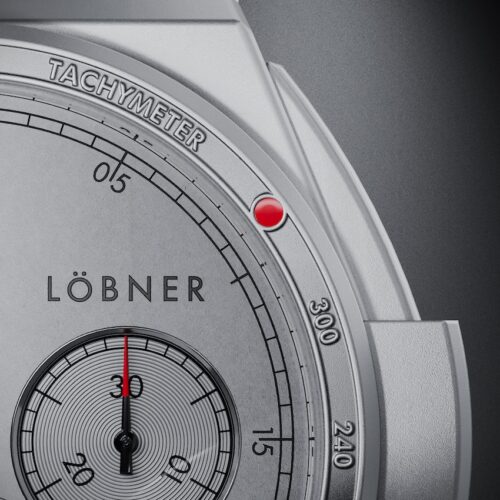
Dial LÖBNER Speed Arrow Limited Edition
Chapter Many luxury brands are increasingly relying on direct sales and exclusivity instead of traditional retailer networks. What sales concept do you pursue for LÖBNER and how do you ensure that the brand grows sustainably?
Emmanuel Dietrich In the beginning, we focused more on classic direct sales with POS because we prefer direct contact. We also use events to get closer to our customers while promoting direct sales—and, of course, to involve and inspire the watch community in the brand’s story. We very much believe in the return of direct contact and communication, even though we are of course pursuing our »digital tasks«.
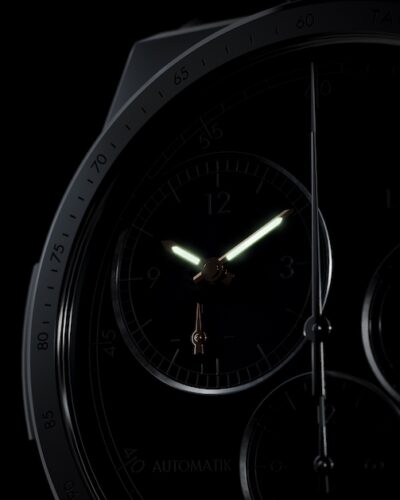
LÖBNER Steelracer Black with characteristic decentralized time display. All models are assembled and finely regulated in Germany with the highest level of craftsmanship.
Chapter In an interview with Chapter, Robert Punkenhofer, who revived the historically important Viennese watch brand Carl Suchy & Söhne in a similar way, emphasizes the particular challenge of building networks and a community in the watch industry—be it dealers, opinion leaders, journalists or collectors. How did you experience and overcome this challenge when relaunching the brand?
Emmanuel Dietrich As a long-time designer in the watch industry and through my own brand, I have always been in touch with the community and take a very personal approach to brand communication. It’s true—and I think that’s a nice aspect of the watch industry—that it’s a smaller and closer community. That makes it human in a time of increasing digitalization, and I really like that.

Emmanuel Dietrich was born in France in 1969 and currently lives and works in Switzerland. In addition to his designs for renowned watch brands, he also works successfully in other design disciplines, particularly in the field of furniture design.
Chapter The renaissance of classic mechanics stands in contrast to the smart, networked technologies of our time. How do you explain the enduring fascination with mechanical watches?
Emmanuel Dietrich Mechanics is something that can be grasped and understood with the senses. It is concrete, speaks of logic, order and efficiency. And that is why it continues to fascinate people and has a calming and soothing effect in our digital age. There is also a growing fascination with craftsmanship, which had long lost its aura before technological progress. Today, there are a number of young watchmakers and customers who are once again cultivating and celebrating it. As this craft has become completely superfluous, it has also become a pure luxury. It is a pure performance to build a watch with a few machines and a lot of savoir-faire—like art.
Chapter If you had to describe a LÖBNER watch in five words, what would they be?
Emmanuel Dietrich Consistent, legible, efficient, geometric, solid. [CS]

